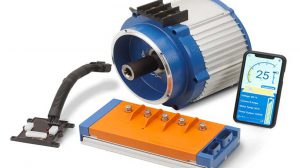QUESTION:
What about regular turn signals?
T.H. from Nebraska
ANSWER:
That is kind of a loaded question! Manufacturers vary so much with wire colors and it is very difficult to just say one fits them all. It seems a wire color standard is not observed in the golf car industry. So it is imperative that you have the correct diagram for the system you are working on.
With this said I have tried to keep our product as close to a repetitive color scheme as possible. Most turn signal heads are either a 4 or 8 wire design. The 4 wire design is used strictly for turn signals. The 8 wire is most widely used and will accommodate a brake light circuit. We will only talk about the 8 wire system.
The head consists of 6 positive circuits. They are LH turn front, RH turn front, LH turn rear, RH turn rear, indicator light, and brake lights.
The next step is to bring in battery positive to the flasher and to the turn signal head for proper distribution to each circuit. Notice the flasher has three connections. L is black wire load to the head. P is blue wire power to the head. X is battery positive from a 12-volt source. X is a red fused wire. Usually the red X wire is connected to the headlight on/off switch. Simply put, all this means is when moving the head lever left or right you are only diverting battery positive to each circuit!
Now here is where most people get confused. Battery negative pre-exists from the headlight circuit. The only negative circuit to the turn signal head is the white wire for the indicator light.
You must also separate the front marker lamps from the headlight circuit! Once separated the appropriate wire can be connected.
The rear lights must be a 3 wire design utilizing a double filament bulb.











